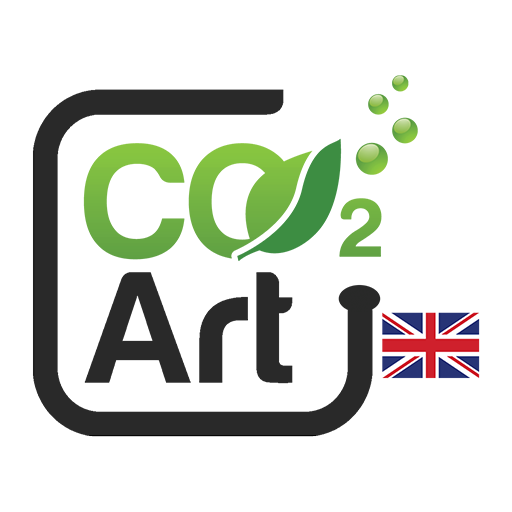What is the aquarium nitrogen cycle?
Information on the nitrogen cycle in an aquarium, which we will describe below, may seem boring to many people. However, In our opinion, understanding the nitrogen cycle is a necessary element of happy fish keeping. The changes taking place in the tank are referred to as the biological cycle, the nitrification process, or new tank syndrome. All these terms refer to one phenomenon – the nitrogen cycle.
The nitrogen cycle in an aquarium involves the growth of beneficial bacteria that help convert ammonia to nitrite and then nitrite to nitrate, which is harmless to tropical fish if kept in low concentration by performing regular water changes.
Basics of the nitrogen cycle
The process of removing the harmful compounds found in a new aquarium can take anything from 2 weeks up to 2 months. One of the most common mistakes people make when they are new to the aquarium hobby is introducing fish into the aquarium before the nitrogen cycle has been completed. If no nitrifying bacteria is present, the amount of poisonous compounds increases rapidly and in most cases causes the death of the newly added livestock.
The best way to track your nitrogen cycle is to purchase an aquarium test kit to check your ammonia and nitrite levels plus, nitrate and pH levels to be able to monitor the progress of your nitrogen cycle in order to know when it is safe to introduce your tropical fish safely.
Stages of the nitrogen cycle
Stage 1
Ammonia is introduced into the tank water via fish waste or uneaten food, or cultures used to inoculate it in a fishless cycle. Fish waste and uneaten fish food turn into NH4 and NH3 – nitrogen compounds that differ in the number of hydrogen atoms. Ammonium (NH4) is not harmful to fish, but NH3 has this effect. The compounds formed in the aquarium, depends on the pH of the water. If the pH is basic, ammonium will be formed. If the pH is acidic, ammonia will form, which is why we should monitor pH during this process.
Stage 2
The anaerobic Nitrosomonas bacteria begin to grow, oxidizing and eliminating the ammonia present in the tank water. Many people think that the filter is designed to purify water mechanically, but this is only one of its functions. More importantly, the filter media becomes a home for friendly bacteria colonies that break down the ammonia. For this reason, it is very important not to wash the filter sponges in tap water during maintenance (it is recommended to use only recently removed aquarium water), nor to turn off the filter for more than 2 hours. Once the Ammonia has been broken down the bacteria produces a by-product called nitrite. This also must be processed before the nitrogen cycle is completed.
Stage 3
Nitrobacter bacteria is now growing in the aquarium which is converting nitrites into nitrates. This is a helpful process however we must now keep an eye on the Nitrate levels in our aquarium water because left unchecked nitrate can become dangerous for fish if in high concentration. The easiest way to reduce the amount of these compounds is a partial water change. It is worth checking the level of nitrates in the water regularly and changing the water if necessary. Nitrobacter bacteria colonies appear in the tank by themselves, but you can speed up the process by purchasing the appropriate bacterial cultures in your local fish shop.
When the amount of ammonia and nitrite in the water reaches zero, and the amount of nitrates increases, you can let aquarium fish into the tank. This condition is constant at all times in a properly maintained established tank. The key to success is a good maintenance routine consisting of water changes and tank water testing with a reliable test kit.
How to lower the level of nitrogen compounds in the aquarium?
- Check the levels of these substances regularly! To do this, it is recommended to purchase a quality test kit. Without knowing the water parameters, we cannot avoid an unexpected ammonia spike.
- Regular water changes. Aquarium filters do not reduce nitrates, therefore 10 – 25% of the water should be changed every week.
- Choose an appropriate aquarium filter. In aquariums, we often come across small internal or external filters that are unable to ensure adequate biological balance. A better solution is to purchase a larger filter and possibly reduce the speed of the water flow if it causes too much water movement. The most important role in the filter is played by the surface of the filter media, their properties, and the aforementioned efficiency (l / h). Bigger is better!
- Remove impurities during water changes. the removal of any excess or uneaten fish food, decaying aquarium plants, dead fish as soon as possible will prevent toxic ammonia from establishing a presence and causing an ammonia spike.
- Don’t add too many fish. Fish produce waste which as you have learned, is the building blocks for a new nitrogen cycle so adding only a few fish, to begin with, will allow the bacteria colonies to establish. you can slowly add a few fish at a time, allowing your aquarium’s bacteria colonies to increase accordingly each time.
- Add live aquarium plants. Nitrogen is a food source for many aquatic plants. Provide your plants with everything they need to grow (Light, CO2, and ferts) and they will help towards reducing any nitrate that is present. This is not a solution to high nitrate levels but can help.


Comments ( 12 )